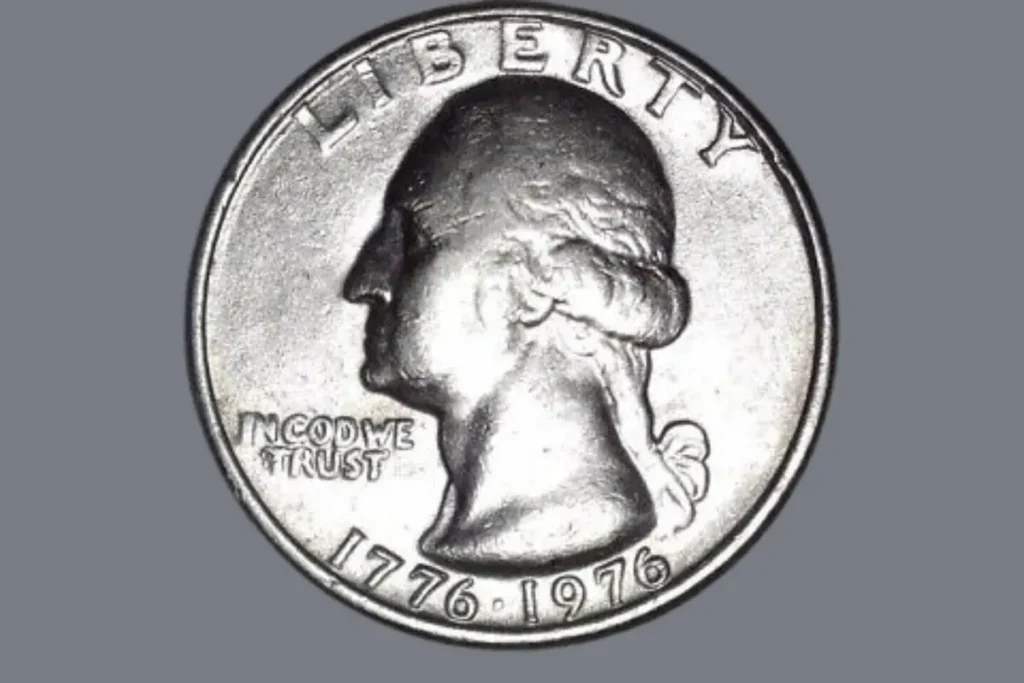In 1976, the United States celebrated its 200th birthday with special Bicentennial coins. The half dollar was one of these commemorative coins, featuring a unique design to mark the nation’s milestone.
Many collectors seek these coins, but some are worth much more than others. In this article, we’ll explore which 1976 Bicentennial half dollars are the most valuable and why they might be worth a lot of money.
What Makes the 1976 Bicentennial Half Dollar Special?

The 1976 Bicentennial half dollar was minted to honor the 200th anniversary of American independence. It has a distinctive design: the reverse side shows a depiction
of the Liberty Bell superimposed on the moon. This design was created by artist Jack L. Ahr. The front side features a portrait of John F. Kennedy.
Factors Affecting Value
Several factors influence the value of a 1976 Bicentennial half dollar:
- Mint Mark: There are three types of 1976 Bicentennial half dollars – from Philadelphia (no mint mark), Denver (D), and San Francisco (S). Coins from San Francisco (S) are usually more valuable, especially if they were struck in proof quality.
- Condition: The coin’s condition, or grade, is crucial. Coins in mint condition, especially those with high grades like MS-65 or higher, are more valuable.
- Errors: Coins with minting errors, such as double strikes or misprints, can be worth significantly more to collectors.
- Rarity: Coins that are harder to find or those with fewer produced in specific years or conditions often fetch higher prices.
Most Valuable 1976 Bicentennial Half Dollars
1976-S Proof Half Dollar:

Proof coins from the San Francisco Mint are highly sought after. The 1976-S proof half dollar in perfect condition can be worth over $10 to $20 or more.
1976-D Half Dollar with a Strong D Mint Mark:
Some 1976-D coins have a strong D mint mark, making them more collectible. These can be worth around $10 to $30.
1976-S Silver Proof Half Dollar:
Silver proof versions, especially in pristine condition, are valuable and can be worth around $15 to $50.
1976-P Bicentennial Half Dollar with Errors:

Coins with notable errors, such as off-center strikes or double die errors, can be worth $50 or more, depending on the error’s significance.
High-Grade 1976-D Half Dollar:
A well-preserved 1976-D half dollar can also be worth up to $20 or more, especially if it is in a high grade.
How to Determine Your Coin’s Value
To find out how much your 1976 Bicentennial half dollar is worth, consider having it graded by a professional. Coin grading services can assess its condition and authenticity, which is important for determining its market value.
The 1976 Bicentennial half dollar is a significant coin in American numismatic history. While many of these coins are not worth a lot, some are highly collectible and can fetch impressive prices,
especially those in excellent condition or with rare errors. If you have a 1976 Bicentennial half dollar, it’s worth getting it appraised to see if you have one of the more valuable varieties.
1. What makes a 1976 Bicentennial half dollar valuable?
A 1976 Bicentennial half dollar’s value depends on its mint mark, condition, and any errors it might have. Coins from the San Francisco Mint or those with minting errors are generally worth more.
2. How can I tell if my 1976 half dollar is a proof coin?
Proof coins have a mirror-like finish and sharper details compared to regular coins. They were minted in limited quantities and often come in protective packaging.
3. Where can I get my 1976 Bicentennial half dollar appraised?
You can have your coin appraised by a professional coin grading service or a reputable numismatic dealer. They will assess its condition and value.
4. Are all 1976 Bicentennial half dollars valuable?
No, not all 1976 Bicentennial half dollars are valuable. Those in better condition, with errors, or from specific mints (like San Francisco) are more valuable.
5. How should I store my 1976 Bicentennial half dollar?
Store your coin in a cool, dry place and use protective holders to avoid damage. Keeping it in its original mint packaging, if available, can also help preserve its value.










